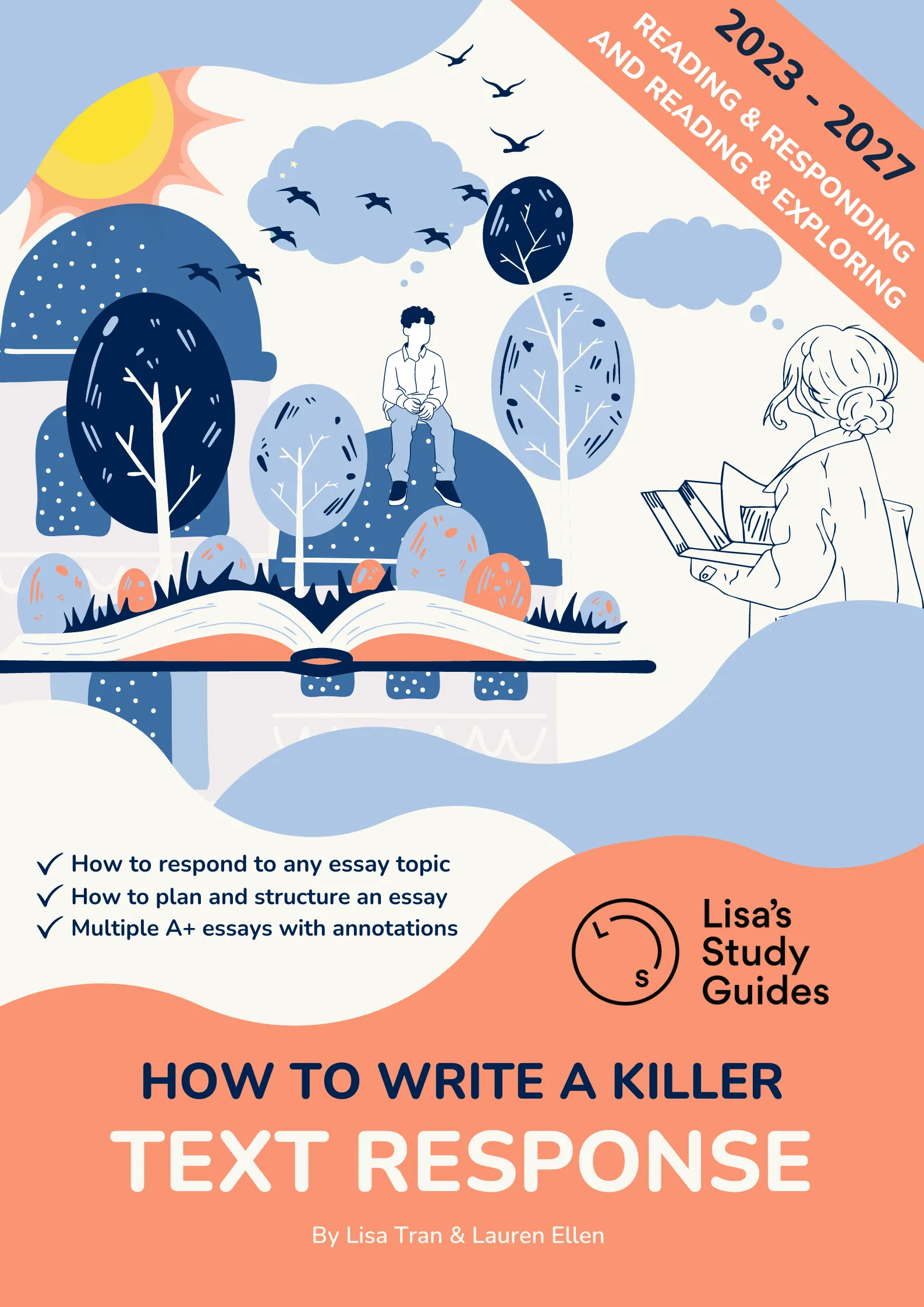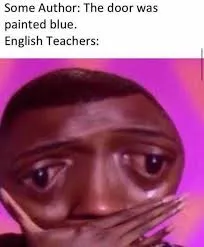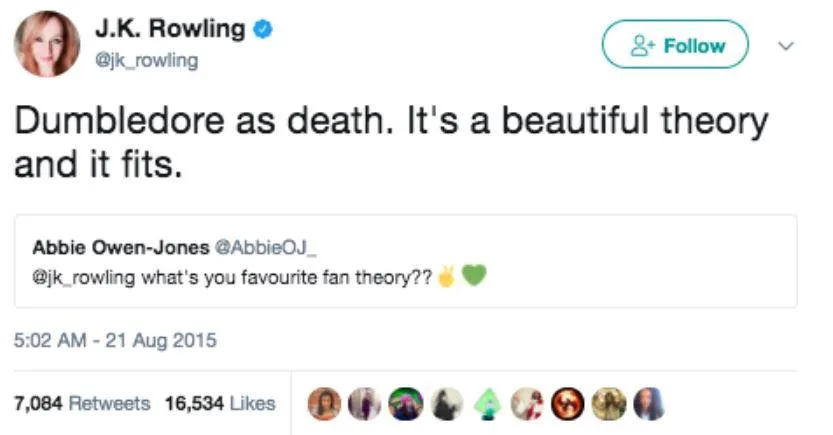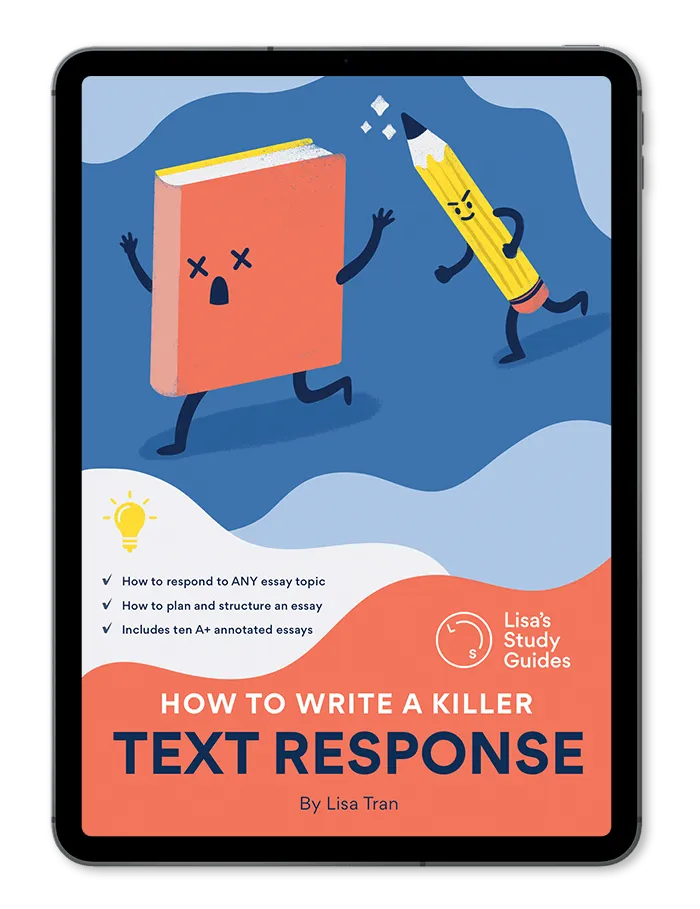Chronicle of a Death Foretold by Gabriel García Márquez is usually studied in the Australian curriculum as a Text Response. For a detailed guide on Text Response, check out our Ultimate Guide to Text Response.
---
Here, we’ll be breaking down a Chronicle of a Death Foretold essay topic using LSG’s THINK and EXECUTE strategy, a technique to help you write better VCE essays. If you’re unfamiliar with this strategy, you can learn about it in our How To Write A Killer Text Response study guide.
Within the THINK strategy, we have 3 steps, or ABC. These ABC components are:
Step 1: Analyse
Step 2: Brainstorm
Step 3: Create a Plan
Let’s get into it!
The Prompt:
‘In Chronicle of a Death Foretold, the murder highlights the failings of society.’ Discuss.
THINK
Step 1: Analyse
The first thing that I identified is that this is a theme-based prompt, with the key words being ‘failings of society’ and ‘murder’.
Although the main theme is societal failure, this is a ‘discuss’ prompt - one of the most flexible types of essay questions, meaning there is an opportunity for me to explore overlapping themes in order to achieve a more in-depth analysis.
The other key word in the prompt is ‘murder’, which relates to the theme of violence. It is important that I respond to the essay topic holistically in each paragraph, meaning each paragraph should explore the correlation between the murder and societal failure, rather than using one paragraph to explore violence and another to outline the failings of society. When I start brainstorming types of societal failure, I’ll find it helpful to identify how they relate to the murder to ensure all key elements of the prompt are being addressed.
Due to the open-ended nature of the prompt, it’ll be easy to stray off topic, especially when exploring related themes in the body paragraphs. So, it’s important that I keep coming back to the prompt - and the main theme - when brainstorming, to avoid delving into an idea that steers the essay away from the prompt.
Step 2: Brainstorm
In order to respond to an essay topic with three distinctive and in-depth paragraphs, I find it helpful to brainstorm possible meanings of the key words in the context of the text and the authorial intention.
Considering that the novella is set in a small Colombian town, the ‘society’ referenced in the prompt can be interpreted to be Colombian society. Although the novella is set in the 1950s, it was published in 1981, meaning that the message Garcia Marquez conveys through the novella is intended for a more modern Colombian society than is presented in the story.
In the context of the text, examples of the ‘failings of society’ are:
- The fixation on honour
- The prevalence of machismo (masculine pride)
- A power imbalance between both gender and class
- Religious pollution
- Incompetence of authority figures and the justice system
- The normalisation of violence in Colombian society in the aftermath of "La Violencia" (the Colombian civil war in 1948-1958), and the subsequent guerrilla wars.
How are these elements of Colombian society portrayed to be failures by the retelling of the murder in the novella?
- The fixation on honour in Colombian society gives rise to negligence of individuals’ moral responsibilities
- Despite knowing of the Vicario brothers’ intention to murder Santiago Nasar, the townspeople fail to take action to save him from a violent demise, as they believe it is the duty of the Vicario brothers to avenge their sister’s honour.
- The townspeople use the sanctity of honour to justify their own negligence in preventing the murder
- The prevalence of machismo in a patriarchal society can result in unfit leaders in positions of power
- Don Lazaro Aponte (Mayor and Colonel) is portrayed to be incompetent in the prevention and inquisition of the murder
- The Mayor’s military experience and machismo values make the townspeople respect him as a leadership figure, despite his inexperience in ‘matters of the law’, highlighting the appointment of unfit leaders as a consequence of the prevalence of masculine pride in a society
- There is an incompetence of authority figures in policing those who use brutality to settle disputes
- Religious pollution; the hypocrisy of a predominantly Catholic society that condones violence against others
- Clotilde instructs the Vicario brothers to ‘leave [Santiago Nasar] for later…out of respect for his grace the Bishop’ who is visiting the town that day, highlighting the performative nature of the townspeople’s Catholicism, as they care more for respecting the ritualistic aspects of their religion than acting morally and protecting Santiago Nasar
- The Bishop - a symbol for religious and moral purity - is disengaged from the townspeople, conveying that despite their reverence and devotion, the townspeople are disconnected from the Catholic church due to their immorality (by allowing brutal violence to be enacted without stepping in)
Step 3: Create a Plan
Paragraph 1: A society that values protecting honour above all else is in danger of allowing individuals to neglect their moral duty of protecting others, using honour as a justification for their own complacency.
Paragraph 2: The townspeople’s inability to adhere to Catholic values gives rise to their callous regard for Santiago’s life.
Paragraph 3: The permittance of Santiago Nasar’s murder by authority figures was an inevitability in a town that equates masculine pride with leadership skills.
EXECUTE
Now it is time to write the essay!
Examining the dynamics of a small Colombian town dictated by Catholicism yet riddled with violence, Chronicle of a Death Foretold explores the moral failings of Colombian society, as the narrator attempts to make sense of the inexplicable circumstances surrounding the murder of Santiago Nasar twenty seven years prior (1). In his pseudo journalistic reconstruction of the crime, Garcia Marquez cautions against the dangers of a society that is fixated on misplaced values. Condemning Colombian society for their fixation on honour, Garcia Marquez contends that an excessive focus on honour can cause individuals to excuse themselves from fulfilling their moral duty (2). Further highlighting the dangerous nature of Colombian society’s obsession with honour, Garcia Marquez illustrates how the equation of masculine pride to leadership skills acts to corrupt authority, hence allowing crime to infiltrate a community (3). Garcia Marquez highlights the superficial nature of religion in Colombian society, conveying how a failure to adhere to Catholic values causes individuals to neglect the importance of human life (4). Garcia Marquez ultimately contends that Santiago Nasar’s murder was inevitable in a town corrupted by immorality (5).
Annotations
(1) The opening sentence of the introduction is often referred to as a universal statement; its purpose is to provide some context about the text - for example, when and where it is set, who the intended audience is, and what key ideas or themes are explored. A text often has too many context points to include, so it is important to consider which ones are most relevant to the prompt and the contention of the essay.
(2, 3 & 4) Another key element to an introduction is outlining the key ideas of the body paragraphs, using one sentence for each body paragraph to make it clear to the reader what the structure of the essay will be. This is called signposting.
(5) Stating an overall contention in the final sentence of the conclusion can tie the three signposting sentences together and link them back to the prompt.
Castigating Colombian society for their misguided prioritisation of the protection of honour, Garcia Marquez’s depiction of the townspeople’s failure to fulfil their moral duty of protecting Santiago Nasar warns against the dangers of using honour as a justification for one’s own complacency. As the Vicario brothers search for someone to ‘stop the crime without bringing any shame on them’, looking to the townspeople for absolution from the murderous obligation imposed upon them by patriarchal society, they are left alone to face the responsibility of protecting their sister’s honour. Garcia Marquez condemns the townspeople for their negligence, conveying that a society’s acceptance of violence deems them as culpable for the crime as the perpetrators. The guilt of the townspeople is illustrated as the magistrate’s notes regarding the crime are described by the narrator as being ‘scribed in red ink’, making it ‘as if they were written in blood’. Garcia Marquez metaphorically conveys the responsibility of the townspeople, as the blood of Santiago Nasar is on their hands rather than the Vicario brothers’. This idea is further instilled as at the time of the murder the ‘knife [keeps] coming out clean’, metaphorically conveying Garcia Marquez’s view that Santiago Nasar’s death is due to the failings of the townspeople, rather than the perpetrators themselves - who have no blood on their hands (6). Garcia Marquez illustrates the consequences of Colombian society’s prioritisation of honour, as the townspeople ‘console…themselves with the pretext that affairs of honour are sacred monopolies’ (7), hence absolving themselves of any guilt for their negligence in the face of brutal violence. Garcia Marquez expresses his distaste for the wrongful justification of individuals’ acts of inhumanity for the sake of protecting honour, cautioning Colombian society against valuing the sanctity of honour above the sanctity of human life (8).
Annotations
(6) When analysing quotes, a helpful strategy is considering the what, how and why. The what is what has been said (the quote), by who and in what context. The how is what techniques the author has used, for example, can you identify any literary techniques using metalanguage? In this instance, it was a metaphor. The why is considering what the authorial intention is, meaning what message the author wishes to convey to the audience.
(7) When embedding quotes, you can alter the sentence structure using ellipses and square brackets in order to make the quote fit and flow within your own writing.
(8) It is important to consider the author’s intended effect on the reader. By understanding who the intended audience of the text is, and what the author’s own views and values are, you can analyse what the author intends the audience to take away from the events within the text and consider in relation to their own lives. This is part of the ‘zooming in and out’ technique, which is also explored in LSG’s How To Write A Killer Text Response - the events from within the text would be the zooming in part, and the relation to your own life would be the zooming out part.
Further expressing his disapproval of Colombian society’s obsession with honour, Garcia Marquez contends that the permittance of Santiago Nasar’s murder by authority figures was an inevitability in a town that equates masculine pride with leadership skills (9). Set against the backdrop of La Violencia, Chronicle of a Death Foretold highlights the consequences of celebrating brute force and excessive masculinity on the moral fabric of a society. Don Lazaro Aponte (10), the town’s mayor, is portrayed as incompetent in the prevention of the murder as he regards the incident with a ‘casual attitude’. As a ‘former troop commander’, it is the Colonel’s military experience that renders him capable of fulfilling his role as Mayor in the eyes of the townspeople, illustrating the prevalence of machismo in a post-civil war Colombian society (11). Garcia Marquez conveys that, in actuality, masculine pride can cause authority figures to fail to fulfil their role, as the Colonel is ‘too conceited to ask [for help]’ when he has ‘no experience in matters of the law’. Garcia Marquez highlights the dangers of equating leadership skills with displays of masculinity through his portrayal of Santiago Nasar’s death as inevitable. Employing a non-linear narrative structure, Garcia Marquez invites the reader to consider Santiago Nasar’s death as a certainty, as they are informed from the first line of the novella that the Viacrio brothers are ‘going to kill him (12)’. Garcia Marquez urges the audience to consider how a ‘death so clearly foretold’ was allowed to happen, hence highlighting the corruption of those who hold power in the town. Garcia Marquez cautions Colombian society against the blind following of leaders who display masculine pride, contending that this does not necessarily equip them for their role.
Annotations
(9) To achieve better flow in the essay, you can link the topic sentence to the previous body paragraph
(10) When brainstorming examples, it is important not to overlook minor characters in the text (such as Don Lazaro Aponte) as they can strengthen your analysis.
(11) Where relevant, further context can also be incorporated into body paragraphs in order to unpack authorial intention and illustrate to the assessor your knowledge of the text.
(12) Non-linear narrative structure is an example of a narrative mode, listed here in our metalanguage word bank for books. Narrative modes are effective in identifying and analysing, as the way the author structures the text impacts the way it affects the reader.
Highlighting the superficial nature of religion in Colombian society, Garcia Marquez contends that the townspeople’s inability to adhere to Catholic values gives rise to their callous regard for Santiago’s life. Garcia Marque explores the performative nature of religion in Colombian society through his characterisation of the Bishop, a religious leader and pillar of morality, as disengaged from the lives and wrongdoings of the townspeople. The Bishop gives a ‘mechanical’ ‘blessing…without malice or inspiration’, emphasising the disconnect between the townspeople and the Catholic church, as religious leadership separates itself from the town despite the townspeople considering themselves to be devoutly faithful. As the ‘fleeting illusion’ of the Bishop disappears, ‘all that [is] left [is] the uproar of the roosters’, a biblical symbol for denial and the need for repentance (13), symbolically alluding to the guilt of the unvirtuous townspeople that the Bishop is abandoning. Despite the town’s need for redemption, the Bishop ‘won’t even get off the boat’, illustrating (14) how the church has little hope for the indecent citizens of the town. Chronicle of a Death Foretold depicts the Catholic leadership disengaging from a society corrupted by moral decay, inviting the Colombian audience to consider their own failure to live out the Catholic values that they preach. The consequences of this religious pollution are illustrated as Clotilde tells the Vicario brothers to ‘leave [Santiago Nasar] for later…out of respect for his grace the Bishop’. Garcia Marquez intends to convey how the superficial nature of religion in Colombian society causes individuals to value ritual over human life, hence perpetuating an environment that allows for the violent murder of Santiago Nasar to be realised without intervention. Garcia Marquez warns Colombian society against the dangers of practising their faith in a superficial manner, cautioning that such practices can lead to the perpetuation of violence.
Annotations
(13) Symbols are an effective literary technique to analyse, however, their meaning and intention may not be immediately clear when reading the text. Researching what a symbol is widely accepted to connote (or mean) can help you form a view on what the author intends to convey through its inclusion.
(14) When analysing the how and why of a quote, it is important to use a variety of vocabulary, such as ‘illustrates’, ‘conveys’, ‘highlights’ and ‘depicts’. This helps to avoid the essay sounding repetitive, and shows that you have a clear understanding of what the author’s intended effect on the reader is.
Garcia Marquez castigates Colombian society for their corruption of values, conveying that violent murder is an inevitability in a patriarchal society riddled with religious pollution and machismo ideals (15). By failing to give the reader a clear explanation of the events leading up to the murder of Santiago Nasar, or the extent to which certain characters are culpable, Garcia Marquez urges Colombian society to consider the destructive nature and potential consequences of their own behaviour (16).
Annotations
(15) A conclusion should include a brief summary of the ideas touched on in the three body paragraphs; however, unlike in the introduction, a whole sentence for each paragraph isn’t necessarily required, as it is important not to become too repetitive.
(16) In order to finish the essay strongly, you can include a key message that the author intends the audience to take away. In this case, I suggested that Garcia Marquez intends for the audience to consider the societal failures that led to the murder, whether they find parallels to these failures in their own lives, and what the potential consequences could be for them. For more help finishing off an essay strong, check out 5 Tips for a Mic-Drop Worthy Essay Conclusion.
---
Want more? Check out Chronicle of a Death Foretold: Ultimate Guide to Themes for a deeper look into key themes for this text.












.jpg)